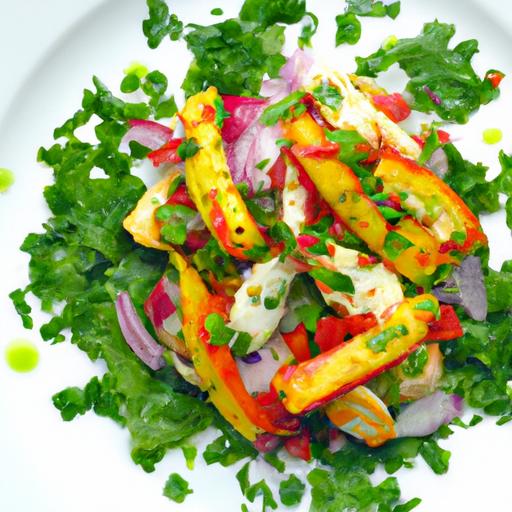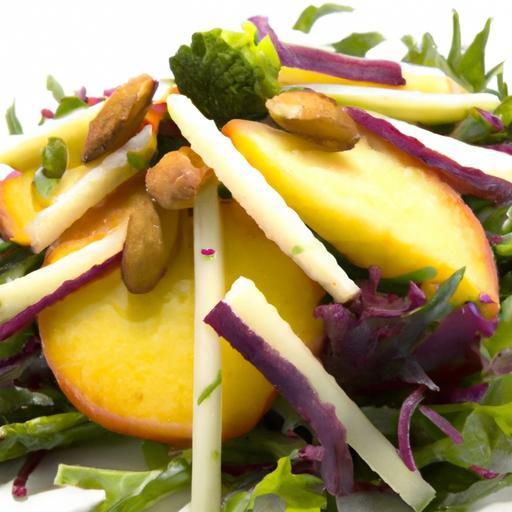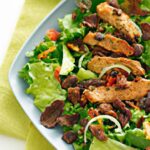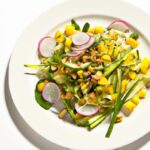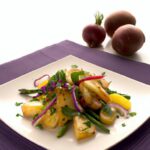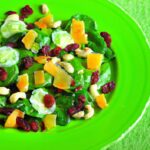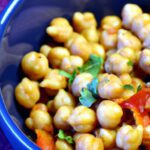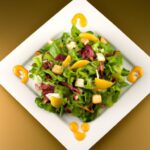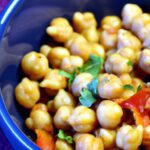In a world where inflammation quietly fuels discomfort and chronic ailments, what if the secret to relief lies not in a pill, but on your plate? Healing Plates: Recipes to Dodge Inflammatory Triggers invites you on a culinary journey where each ingredient is chosen with intention, each recipe crafted to soothe your body from within. Beyond mere nourishment, these dishes serve as an armor against inflammation, empowering you to reclaim vitality and wellness. Dive into flavors that heal, textures that comfort, and meals that turn everyday eating into an act of self-care-because true healing begins where your fork meets the feast.
Power-Packed Anti-Inflammatory Quinoa Salad: Nourish Your Body, Delight Your Senses
Healing Plates: Recipes to Dodge Inflammatory Triggers begin with vibrant, nutrient-dense dishes like this power-packed quinoa salad. Inspired by Mediterranean flavors and designed specifically to soothe inflammation and revitalize your wellbeing, this salad balances antioxidant-rich ingredients with wholesome protein and healthy fats. The crispness of fresh vegetables, the earthiness of quinoa, and the zing of lemon-turmeric dressing combine for a delicious, healing meal you’ll crave again and again.
Prep and Cook Time
Preparation: 15 minutes | Cooking: 20 minutes | Total: 35 minutes
Yield
Serves 4 generously
Difficulty Level
Easy – Perfect for weekday lunches or light dinners
Ingredients
- 1 cup organic quinoa, rinsed thoroughly
- 2 cups water or low-sodium vegetable broth
- 1 cup cherry tomatoes, halved
- 1 medium cucumber, diced
- 1 cup baby kale, chopped finely
- 1/4 cup red onion, finely diced
- 1/3 cup fresh parsley, chopped
- 1/4 cup toasted walnuts, roughly chopped
- 1/4 cup extra virgin olive oil
- Juice of 1 large lemon
- 1 tsp ground turmeric
- 1 tsp raw honey or maple syrup (optional, for a touch of sweetness)
- Salt and freshly ground black pepper, to taste
- 1/2 tsp ground cumin
- 1 garlic clove, minced
Instructions
- Cook quinoa: In a medium saucepan, bring the water or vegetable broth to a boil. Add the rinsed quinoa and a pinch of salt. Reduce heat to low, cover, and simmer for 15 minutes or until liquid is absorbed and quinoa is fluffy. Remove from heat and let it cool slightly.
- Prepare the dressing: In a small bowl, whisk together the extra virgin olive oil, lemon juice, ground turmeric, ground cumin, minced garlic, and honey or maple syrup if using. Season with salt and pepper to taste. Whisk until emulsified.
- Combine salad ingredients: In a large mixing bowl, toss together the slightly cooled quinoa, halved cherry tomatoes, diced cucumber, chopped baby kale, diced red onion, and fresh parsley.
- Add dressing: Pour the turmeric-lemon dressing over the quinoa mixture. Toss gently to combine all flavors thoroughly without bruising the fresh vegetables.
- Finish with crunch: Sprinkle the toasted walnuts on top for that satisfying contrast in texture and a boost of anti-inflammatory omega-3 fats.
- Rest and serve: Let the salad rest for 10 minutes to allow flavors to meld, then serve chilled or at room temperature.
Tips for Success
- For extra protein, add cooked chickpeas or grilled wild-caught salmon to your salad.
- If fresh turmeric is available, grate 1 tsp into the dressing instead of ground turmeric for a vibrant color and fresher taste.
- Walnuts can be swapped for almonds or pecans depending on preference or allergy considerations.
- This salad holds well refrigerated for up to 2 days, making it an excellent make-ahead meal for an anti-inflammatory lifestyle.
- Massage the kale with a little olive oil and salt before adding it to soften its texture if you prefer a more tender bite.
Serving Suggestions
This colorful quinoa salad looks stunning served in a wide shallow bowl, garnished with a sprig of fresh parsley or a dusting of smoked paprika for visual warmth. Pair with warm, crusty gluten-free bread to soak up juicy bites, or enjoy as a stand-alone lunch with a crisp white wine or herbal tea. For added zest, squeeze a little extra lemon juice just before serving.
| Nutrient | Per Serving |
|---|---|
| Calories | 320 kcal |
| Protein | 8 g |
| Carbohydrates | 32 g |
| Fat | 17 g |

For more inspiration on incorporating anti-inflammatory foods into your routine, check out our guide on Anti-Inflammatory Breakfast Ideas. To deepen your understanding of inflammation’s roots and effects, visit this comprehensive resource from the Harvard T.H. Chan School of Public Health.
Q&A
Q&A: Healing Plates – Recipes to Dodge Inflammatory Triggers
Q1: What exactly are “healing plates,” and why should I care about them?
A: Healing plates are thoughtfully crafted meals designed to calm your body’s inflammatory fire rather than fuel it. By focusing on anti-inflammatory ingredients, these dishes can help reduce chronic inflammation, bolster your immune system, and promote overall wellness. Think of them as edible armor against hidden dietary triggers that might be slowing you down or causing discomfort.
Q2: What common inflammatory triggers should I avoid in my diet?
A: Some of the usual culprits include processed sugars, refined carbohydrates, excess red meat, and artificial additives. Additionally, certain oils high in omega-6 fatty acids, such as corn and soybean oil, can exacerbate inflammation. Healing plates sidestep these triggers and instead spotlight whole, nutrient-dense foods.
Q3: Which ingredients star in these healing recipes?
A: Turmeric, ginger, leafy greens, berries, fatty fish like salmon, nuts, and seeds take center stage. These ingredients are packed with antioxidants and compounds that naturally quench the inflammatory response, turning your plate into a vibrant canvas of health.
Q4: Can these anti-inflammatory meals help with specific health conditions?
A: Absolutely! While healing plates aren’t a cure-all, they can alleviate symptoms of conditions linked to inflammation such as arthritis, eczema, and digestive disorders. Regularly incorporating these recipes into your diet might even improve energy levels and mental clarity.
Q5: Are healing plates difficult to prepare or expensive to make?
A: Not at all. One of the best things about these recipes is their simplicity and accessibility. Many rely on everyday pantry staples and fresh produce. With a little creativity and guidance, you can whip up meals that are both budget-friendly and bursting with flavor.
Q6: How do I start incorporating healing plates into my daily routine?
A: Begin small-swap out inflammatory snacks for anti-inflammatory options like walnuts or berries. Gradually build meals around vegetables, whole grains, and anti-inflammatory herbs. Over time, your palate will adapt and crave these nourishing flavors naturally.
Q7: Where can I find inspiration for healing plate recipes?
A: There are countless cookbooks and online resources devoted to anti-inflammatory eating. Look for recipes that emphasize colorful vegetables, lean proteins, and spices known for their healing power. Experiment with smoothies, bowls, and roasted dishes that make healing both delicious and fun.
Q8: Can healing plates replace medication or professional medical advice?
A: Healing plates are a powerful dietary strategy, but they are complementary to-not replacements for-medical treatment. Always consult your healthcare provider for personalized advice, especially if you have chronic health conditions.
Q9: How long does it take to notice benefits from eating healing plates?
A: Some people feel differences within days, such as reduced bloating or sharper mental focus. For others, it may take a few weeks to notice improvements in inflammation-related symptoms. Consistency is key-think of it as a healing journey plated with patience.
Embrace healing plates, and turn every meal into an opportunity to nourish, protect, and thrive. Your body will thank you!
In Conclusion
As we close the chapter on these healing plates, remember: every bite holds the power to soothe, restore, and invigorate. By choosing recipes that dodge inflammatory triggers, you’re not just feeding your body-you’re nurturing a vibrant, balanced life from the inside out. Let these dishes be your culinary armor, transforming mealtime into a mindful act of healing. Embrace the flavors that heal, and watch inflammation fade into the background, making room for wellness to take center stage. Your journey to calm, comfort, and vitality starts right here-one nourishing plate at a time.